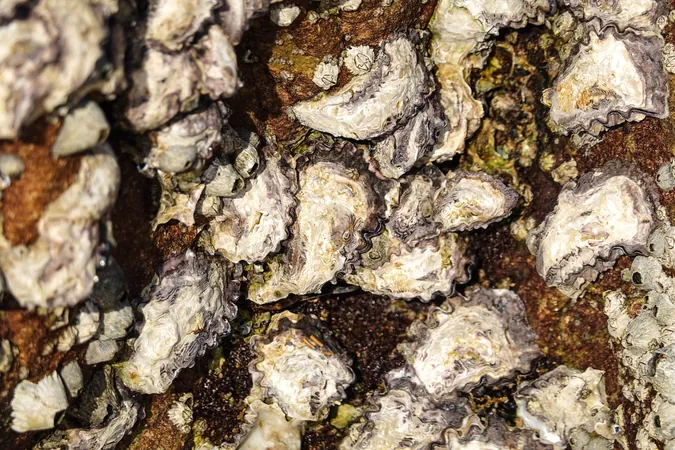
Unveiling Nature's Secret: Freshwater Oysters Might Revolutionize Eco-Friendly Adhesives!
2024-09-17
Introduction
If you thought oysters were simply a staple of seafood cuisine, think again! New research suggests that freshwater oysters could be instrumental in crafting stronger and more sustainable adhesives, with potential uses ranging from dental care to construction and beyond. An international research team has made significant discoveries at the Canadian Light Source (CLS) at the University of Saskatchewan (USask), shedding light on the unique adhesive properties of these freshwater gems.
The Unique Adhesive Properties of Etheria elliptica
Found thriving in African rivers and lakes, the Etheria elliptica oysters produce a distinct adhesive substance that enables them to cling to surfaces like wood or even other oysters, contributing to the formation of intricate underwater ecosystems. This oyster glue, never before studied, boasts remarkable characteristics: it consists of a mineral called aragonite, ingeniously organized by the oyster so that its outer layer remains soft while the inner layer becomes progressively harder. This structural uniqueness may hold the key to innovative adhesive applications in various industries.
Potential Medical Applications
Rebecca Metzler, a professor of physics at Colgate University, articulates the relevance of this research, stating, "Although these oyster shells differ from our teeth and bones, there are notable similarities. If the adhesive functions well for the oyster, it could potentially be quite beneficial for applications within the human body."
The Science Behind the Glue
The glue's exceptional stickiness stems from the combination of aragonite with unique proteins produced by the oysters. This discovery could lead to the formulation of more effective synthetic, eco-friendly adhesives that replicate the properties of the oyster's natural glue. The findings of this pioneering research have been detailed in the prestigious journal, *Advanced Materials Interfaces*.
Research Methodology
According to Metzler, the CLS provided the ideal conditions for their investigation due to its specialized energy range and advanced microscopy techniques. "With such capabilities, we could observe our samples and gather essential spectral data, allowing us to unravel the elegant architecture of these oyster adhesives," she explains.
Implications and Future Applications
The team's analysis revealed that the oyster glue comprises microscopically tiny aragonite particles that gather into crystals of various shapes and sizes. This unique information can be leveraged to engineer synthetic versions of the adhesive in laboratory settings. The implications of their findings are vast, potentially leading to adhesives for dental implants, biodegradable options for packaging, and even materials for constructing underwater structures.
Conservation Efforts
Moreover, Metzler's research plays a vital role in the conservation of Etheria elliptica oysters. With freshwater mussel populations rapidly diminishing worldwide, understanding how these organisms construct underwater habitats is crucial for preserving their ecosystems amid climate changes. This insight will also assist local communities in practicing sustainable oyster harvesting, ensuring the longevity of this valuable species.
Future Research Directions
As the oysters used in this groundbreaking study were collected years ago, the next phase of research will focus on assessing the impacts of climate change on more recent oyster samples. "We are particularly interested in determining whether changes similar to those observed in other species have occurred," Metzler adds, highlighting the interconnectedness of environmental health and scientific discovery.
Conclusion
Stay tuned as this gripping story unfolds—could the humble oyster hold the future for sustainable adhesive technology? Only time will tell!


 Brasil (PT)
Brasil (PT)
 Canada (EN)
Canada (EN)
 Chile (ES)
Chile (ES)
 España (ES)
España (ES)
 France (FR)
France (FR)
 Hong Kong (EN)
Hong Kong (EN)
 Italia (IT)
Italia (IT)
 日本 (JA)
日本 (JA)
 Magyarország (HU)
Magyarország (HU)
 Norge (NO)
Norge (NO)
 Polska (PL)
Polska (PL)
 Schweiz (DE)
Schweiz (DE)
 Singapore (EN)
Singapore (EN)
 Sverige (SV)
Sverige (SV)
 Suomi (FI)
Suomi (FI)
 Türkiye (TR)
Türkiye (TR)